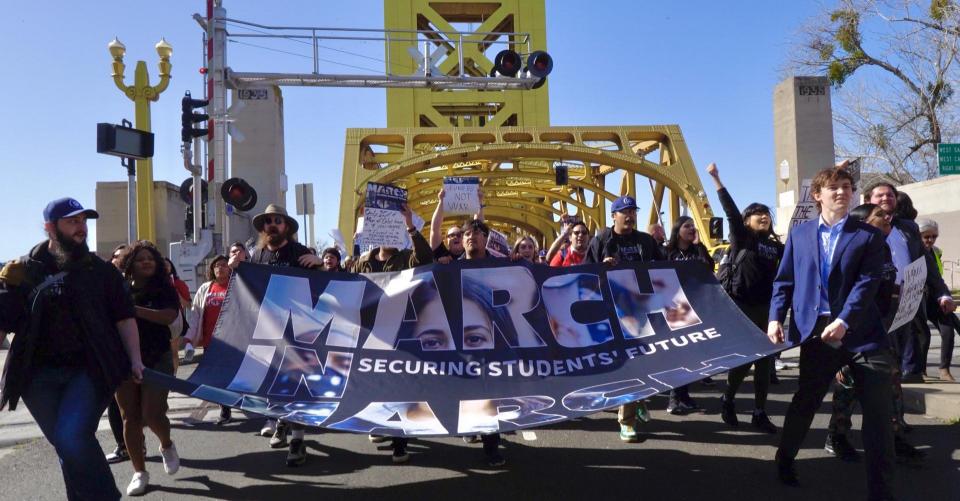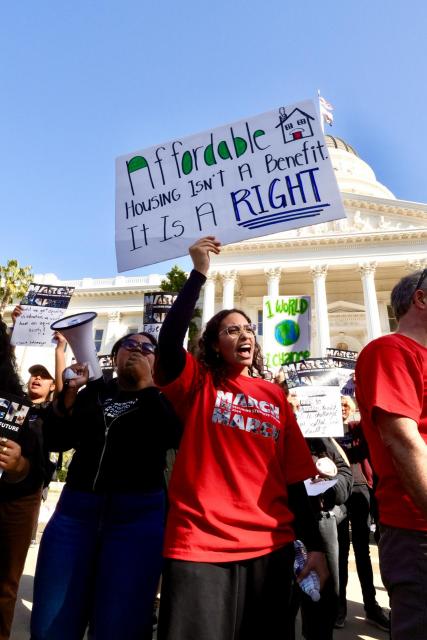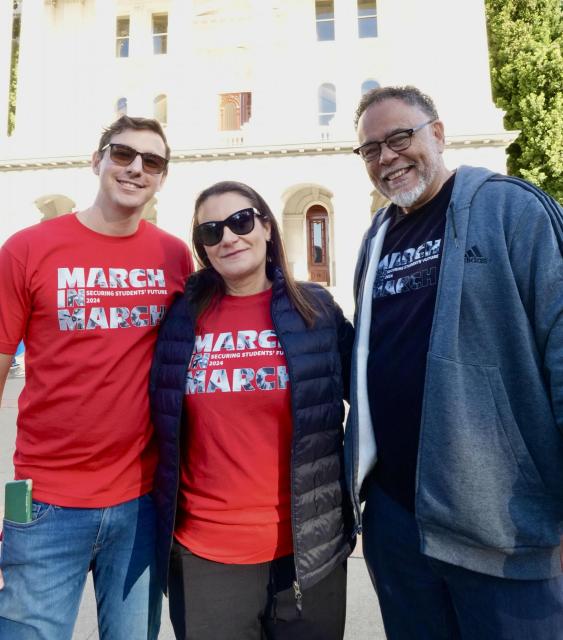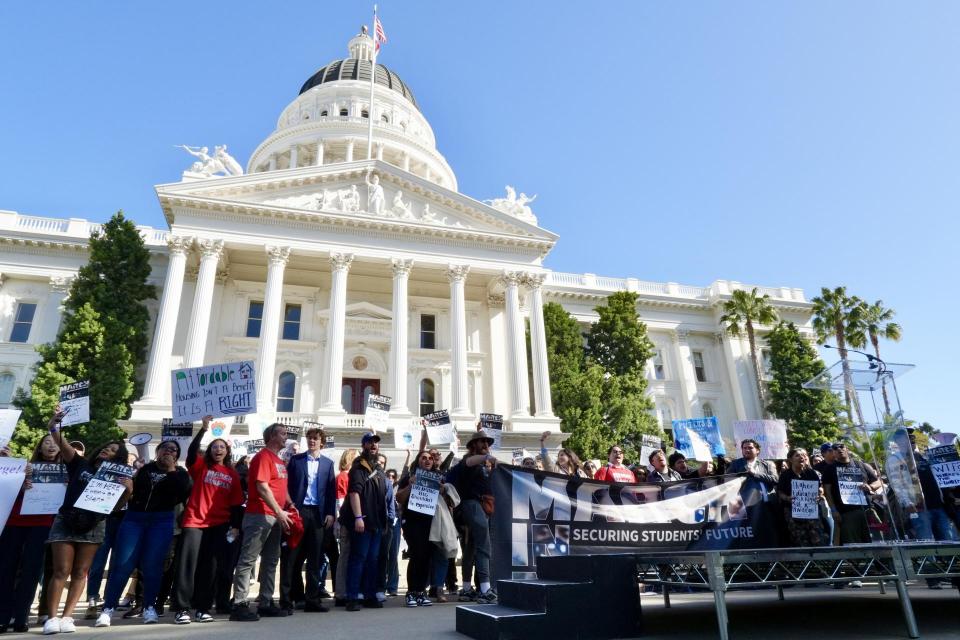On a day with weather bright enough to match their spirits, a throng of over 500 students, faculty, and education advocates marched to the west lawn of the state capitol on March 7 in support of community college students, workers, and climate justice. Bringing back the annual March in March, it was the largest such action in the Capitol by student and community college activists in over a decade.
Watch a video of the March in March by clicking here.
The march’s main theme was about securing students’ futures.
The March in March had been an annual event from 2010-2014 driven by students’ frustrations, mostly from a combination of increasing tuition hikes and sharp cuts to the number of classes offered. This meant, in some cases, course waiting lists of up to 50 students desperate to get a class to complete their education. These marchers’ efforts in part led to the passage of Prop. 30 in 2012, and Prop. 55 in 2016—two propositions which provided needed state funding by making slight tax increases on upper income earners. Both served as a godsend for community colleges and even allowed for the realization of tuition-free community college for some students via the College Promise Program. One of the demands of this year’s march was the extension of College Promise to all students, or making community college free for all.
It was Sociology professor and Los Angeles Faculty Guild
President James McKeever
who put out the call to revive the march at a CFT Community
College Council meeting last August. Recalling how in 2010
students stepped into action organizing for the first March in
March, which ultimately lead to thousands of students marching on
the capitol, McKeever stated,
“I was really moved by what the students at then LACCD were doing then, and felt it was time to bring it back.”
Today, despite the strong national economy, housing, education and general living costs have sharply risen. A recent report from the Community College League of California has found 66.6% of California Community College students suffer from some sort of food or housing insecurity.
McKeever’s own biography may best exemplify the promise of community college. Coming from a black working-class background, McKeever found himself a single father at 18. Though his mother actively encouraged reading, his family did not have a tradition in higher education.
“With a young son, I knew I had to do something,” he said.
He started taking classes at Los Angeles Valley College in what would be a nine-year journey to getting an A.A. After getting his degree he started working with youth in the local parks department, and then before working in probations. Encouragement from a superior led him to get his BA in Sociology at CSU Los Angeles, then later a Sociology PhD at USC, a path that took him over 30 years.
In looking back over his own journey, and his success despite the odds, McKeever feels that more support must be given to students.
“Without a future for students, there is no future for us.”
Hence, he took a leadership role in organizing the march.
For many students who took part in the march the precarity of their futures already weighs on them. Students like Dalia Ramirez, a political science major at San Diego City College, cited issues from immigration to housing to basic needs as her reasons to march.
Ramirez, the American daughter of undocumented parents, can only get by through holding a number of jobs. She has no healthcare outside of what is provided by City College. As she stated, “I’m OK for maybe a minor illness, but not if I break a leg.”
Along similar lines, other students who attended the march spoke about the struggles of being single parents trying to negotiate work and school, about their struggle in overcoming incarceration to make a future for themselves, and of aspirations to give back by becoming teachers themselves. Notably, one student, a recent college graduate now working on her teaching certification, spoke of having to student-teach while effectively surviving on no income. Others pointed to another pressing issue, climate justice, with a student speaker calling for CALSTRS to divest from fossil fuels met with thunderous support.
The poor working conditions and pay for part-time instructors in California community colleges was also a major highlight. Some part-time instructors, who comprise over two-thirds of community college faculty, must rely on government assistance, and some live in their cars. Despite the approval of $200 million dollars in annual, ongoing state funding for part-time faculty healthcare, many districts still offer little to no insurance to their part-time faculty.
“The system is broken,” said Marlo Smith, an ESL Instructor with the North Orange Community College District and the new president of Adjunct Faculty United, the largest part-time faculty only union in the state.
“We have a prosperous state with the fifth largest economy in the world, and yet students and faculty are starving . . . starving of their dignity, starving of their basic rights—enough is enough!”
Even as the march was drawing to a close, organizers were looking to next year, given a looming California budget deficit and the potential for greatly reduced cost of living adjustments (COLAs) in the coming years. McKeever and other organizers are looking to further empower the students to lead the way. McKeever later noted, the effort faculty put into reviving the March in March did not go unnoticed. As one student said to him, “It’s so great to see that the teachers are about more than themselves.”




